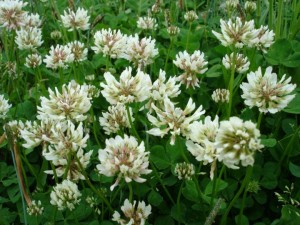You Reap What You Grow
 Flower buds and flowers are prerequisites to the production of seeds or fruit by plants.
Flower buds and flowers are prerequisites to the production of seeds or fruit by plants.
Tiny flower buds are actually formed long before they become obvious. In corn, for example, the cob and tassel buds form when the plant is only about knee high. In apple trees, the buds that will produce next year are formed this year.
The quantity and quality of fruit and seeds depends partly on the number and health of the flower buds – along with other factors such as weather, light, nutrients and pollination. Farmers clearly have no control over some of these, but they can certainly influence plant nutrition and health. Once again, this reinforces the importance of fertile soil.
After flowers have been pollinated, seed and fruit development begins – and the nutrition and health of plants are critical during this time. Water, sugars, amino acids, organic acids, inorganic nutrients, and hormones from roots, stems and leaves are redistributed to the developing seeds and fruit.
Plants’ needs for some soil nutrients peak at this time – similar to the demands of human pregnancy. If plants are to cope properly with this demand for nutrients, their “plumbing” (xylem and phloem) must be in good condition, and all their metabolic and photosynthetic activities must be in top nick.
Remember the xylem and phloem. They’re the two tubular vascular tissue systems (like pipes) that transport water and nutrient molecules around the plant. The xylem tissue takes them mainly upward, while the phloem carries food and minerals from one place to another.
When water and nutrients get into the xylem, they are carried upward through hollow, tubular vessels by a pulling force from above. Those parts of the plant, such as leaves and actively growing areas, that need water create a water deficit and pull the water up through the xylem.
Both the xylem and phloem systems can be plugged if plants are not healthy. A lot of poor health in plants can be traced to soil problems – not enough nutrients; nutrients not available or not in the correct form; the wrong balance of nutrients (when nutrients interact, too much of one and not enough of another can have drastic adverse effects).
These problems can very often be traced to insufficient humus and soil organisms in the soil.
Now, imagine you’re inside a phloem cell and gliding down a leaf, back into the plant’s stem and out into, say, a developing corn cob. It’s a beehive of activity.
In the earlier stages of seed and fruit development, a lot of new cells are produced by cell division; later, the existing cells simply enlarge as the seed and fruit swells. Now, large quantities of food and other chemical substances from the leaves are moving into the seed or fruit for storage. Later, in grain crops, much of the moisture in the kernels is, or should be, removed, producing a “dry” grain that can be stored without turning mouldy.
In both seeds and fruit, there are also chemical transformations in the type of stored food, from sugars to starches, organic acids, proteins, and fats or oils.
These are all metabolic activities, and they all require cell energy (supplied by phosphate-containing energy carriers), enzymes and, often, hormones.
If the reproduction process is to occur normally and result in top-quality seeds and fruit, plants must be healthy, and well fed with water and nutrients.
If there are trace-element deficiencies, for example, there may be a shortage of the enzymes that regulate vital metabolic steps. This will lead to low test-weight, low yields or low-quality (low biological value) animal feed.
Or, if the all-important plumbing is blocked, the food the seeds and fruit need may not get through. Or water may not be removed, and the grain will not be “dried down” naturally – which will leads to additional grain-drying expense for farmers.
As with so many living organisms, most of these problems can be prevented quite easily. Prevention in this case comes down to maintaining a healthy soil with good tilth, adequate humus and soil organisms, and proper fertilisation.

